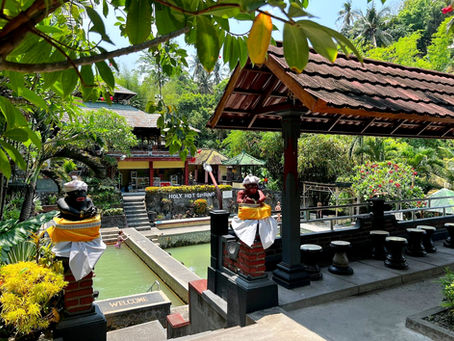top of page

GLOBAL SHANANIGANS

Search


Elephant Trunk Hill
At the confluence of the Li and Taohua Rivers, Elephant Trunk Hill stands as a silent guardian of Guilin, a natural sculpture shaped by time and legend. Said to be the petrified form of a celestial elephant struck down by the Heavenly Emperor, it blurs the boundary between myth and geology. For over a thousand years, poets and monks have carved their reverence into its stone, honouring its enduring spirit of wisdom and compassion.
Shannon


Suan Dok Temple
Marked by the presence royal ashes, Wat Suan Dok was established in the 14th century on the grounds of a royal garden. Its tranquil exterior belies over six centuries of sacred history. Whitewashed chedis catch the northern Thai sunlight, standing as symbols of devotion, mortality and remembrance. Surrounding the central chedi, royal mausoleums enshrine Chiang Mai’s rulers, underscoring the temple’s role as a spiritual bridge between the living and the departed.
Shannon


Batukaru Temple
High on the slopes of Mount Batukaru, Pura Luhur Batukaru is a sacred temple dedicated to Mahadeva, Bali’s fierce and protective God of nature. Moss covered meru towers rise above sacred springs and the air seems charged with centuries of devotion. The temple bears the memory of a violent battle that once shook its grounds, while legends of unseen guardians and lingering spirits continue to echo through its courtyards, giving Batukaru an enduring aura of mystery and sacred po
Shannon


Bale Kambang
Floating within the ruins of Klungkung Palace, Bale Kambang rises like a defiant island, a silent witness to centuries of ambition, devotion and blood soaked politics. Built when Bali’s unified kingdom splintered into warring courts, it is more than a royal relic, a fusion of power, spirituality and symbolic mastery. Its ceiling murals depict kings and gods walking the line between the mortal and the divine, while the surrounding waters reflect the cosmic ocean and the fragil
Shannon


Tiger Cave Temple - Wat Tham Suea
Hidden deep within the forest, the Tiger Cave Temple was founded in 1975 by a devoted monk seeking refuge from the world’s distractions. Drawn to the untouched serenity of the jungle, he discovered a secluded sanctuary where the whispers of the trees and the stillness of the air created the perfect environment for deep meditation. Amid shadowed caves and quiet trails, the temple rose as a place where nature, legend and spiritual devotion converge.
Shannon


Hoi An Ancient Town
The City of Lanterns shimmers along the Thu Bon River, where centuries old timber houses and winding alleys seem frozen between past and present. Hoi An has drawn travellers for over 2000 years, its history etched in buried ceramics and whispered legends. Beneath the glow of lanterns, the streets still carry the energy of centuries of trade, daily life and the people who shaped the town into the vibrant place it is today.
Shannon


Khao Sok National Park - Thailand’s Ancient Jungle
Declared a national park in 1980, Khao Sok in southern Thailand’s Surat Thani Province is a primeval wilderness frozen in time. Towering limestone karsts and winding rivers carve through a sprawling rainforest so ancient it once lay beneath a prehistoric ocean. At 160 million years old, Khao Sok’s evergreen rainforest offers travellers a rare glimpse into a world that has survived ice ages, shifting continents and humanity’s relentless march.
Shannon


Wat Chedi Luang
Commissioned under King Saen Muangma in the late 14th century, this ancient royal monastery stands among Chiang Mai’s most venerated temples. Originally envisioned as a monumental reliquary to honour and enshrine the ashes of his father, King Ku Na, it was to rise as a symbol of royal devotion and divine aspiration. Yet destiny had other plans.
Shannon


Po Lin Monastery
Founded in 1906 by three monks, Po Lin Monastery rose in the misty mountains of Lantau Island as a quiet refuge for meditation and devotion. Far from the city’s chaos, it became a place where faith could flourish undisturbed. Over time, it grew into one of Hong Kong’s most revered Buddhist sanctuaries.
Shannon


Wat MingMuang - The Temple of Crouching Elephants
Long ago, the land where Wat MingMuang now stands was a vast, fertile swamp, alive with dense reeds and winding waterways. Hidden within this wild sanctuary, majestic elephants roamed freely, revered as sacred symbols of power, wisdom and royalty. Amid this untamed beauty, the temple’s foundations were laid, a place where human devotion met the quiet majesty of nature, shrouded in the whispers of centuries past.
Shannon


Wat Phan Tao - Temple of a Thousand Kilns
Tucked in the heart of Chiang Mai’s ancient walled city, Wat Phan Tao is a hidden gem often overlooked beside the towering Wat Chedi Luang. Its quiet teakwood halls exude history and calm, a rare glimpse into 14th-century life during the Mangrai Dynasty. Originally built as a residence for local monks rather than a grand temple, it invites visitors to step back in time and soak in a serene, meditative atmosphere.
Shannon


Wat Sri Suphan - The Silver Temple
Located among the narrow, winding lanes just south of Chiang Mai’s historic South Gate, Wat Sri Suphan stands as the dazzling centerpiece of the Haiya subdistrict, a historic residential area renowned for its traditional silver workshops. An inscription within the temple grounds reveals that the complex was originally built in 1501 during the reign of King Mueang Kaeo, the 11th ruler of the Lanna Kingdom’s Mangrai Dynasty.
Shannon


The Royal Twin Pagodas
Perched atop the misty heights of Doi Inthanon National Park, the twin pagodas were built to honour the 60th birthdays of King Bhumibol Adulyadej and Queen Sirikit. Beyond their striking architecture, these sacred structures embody Thailand’s deep respect for the monarchy, the enduring strength of its Buddhist heritage and the unity of its people, standing as timeless symbols of reverence and national pride.
Shannon


Banjar Holy Hot Springs
Believed to have been used for nearly a thousand years, the Banjar Hot Springs, known locally as Permadian Air Panas, hold deep spiritual and cultural significance dating back to at least the 10th century. Oral traditions and local belief suggest these sacred springs have long served as a place for ritual purification and healing, well before the arrival of modern tourism.
Shannon


Wat Phra Singh - Temple of the Lion
Shrouded in centuries of legend, Wat Phra Singh rises in the heart of Chiang Mai’s Old City as a sanctuary of faith and mystery. Built in 1345 under Lanna King Phayu, it was created to guard a sacred Buddha relic and cradle the ashes of his father, linking royal legacy with divine purpose. Known as the Monastery of the Lion Buddha, its golden halls still echo with the chants of monks and novices drawn from across Southeast Asia, drawn by whispers of ancient power and the endu
Shannon


Co Loa Ancient Citadel
Dating back to 208 BC, Co Loa Citadel rose as the heart of the ancient Au Lac kingdom under the legendary King An Duong Vuong. Legend tells of a mighty crossbow and protective magic, yet even these could not save the kingdom from betrayal and ruin, a story of power, ambition and ghosts that still linger over the northern plains.
Shannon


One Pillar Pagoda
Regarded as one of Vietnam’s most iconic architectural treasures, the One Pillar Pagoda rises like a solitary lotus from the water. Built in 1049 AD by Emperor Lý Thái Tông and dedicated to Quan Âm, the Bodhisattva of Compassion, the shrine has long drawn worshippers seeking fertility, health and divine favour, its slender silhouette a silent witness to a millennium of faith and history.
Shannon


Tegenungan Waterfall
Falling into the Petanu valley with relentless force, Tegenungan’s cascade carries centuries of ritual and legend, its spray painting the gorge with the whispers of kings and cursed rivers.
Shannon


The Temple of Literature
Founded in 1070 AD under Emperor Lý Thánh Tông, the Temple of Literature honours Confucius and his disciples, its courtyards, banyan trees and lotus ponds echoing centuries of scholarly pursuit. Later home to Vietnam’s first university, it carries the weight of history and the whispered presence of generations of students, a place where wisdom feels alive, shadowed by the spirits of those who once walked its paths.
Shannon


The Royal Regalia Museum of Brunei
The opulent treasures of the Sultan’s legacy are displayed at the Royal Regalia Museum, from glittering crown jewels and ceremonial weapons to life sized gilded carriages and intricately crafted thrones, reflecting the grandeur of royal ceremonies. Heirlooms of faith and power trace the royal family’s lineage to the 14th century, while lavish gifts from world leaders, exquisite Islamic art and rare Qurans highlight the fusion of culture, spirituality and monarchy.
Shannon
bottom of page